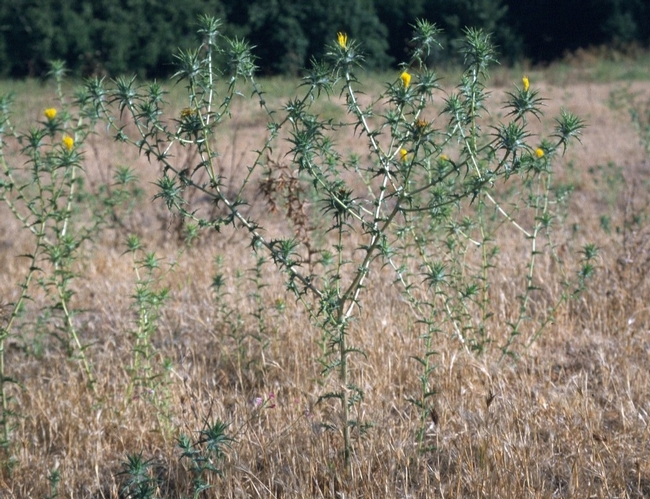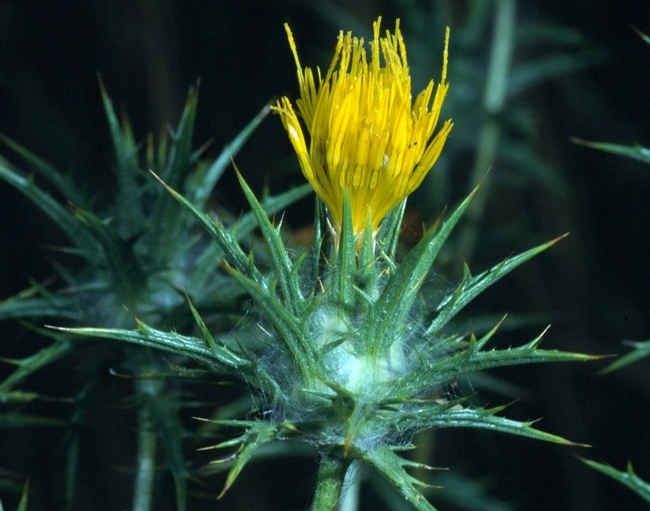Over the past several years, land managers and ranchers in Marin and Sonoma counties have been concerned with the spread of woolly distaff thistle (Carthamus lanatus). However, there is very little research conducted on the control of this species. Because of the lack of direct information on its management, land managers have relied on information previously published on yellow starthistle (Centaurea solstitialis). Yellow starthistle is a related species with some phenological similarities to woolly distaff thistle, but it does not provide a perfect analogy.
As a result, we tested a number of herbicides for the control of distaff thistle at two timings (mid-winter and spring) and two rates in Marin County. Our herbicide treatments included aminopyralid (Milestone), clopyralid (Transline), triclopyr + aminopyralid (Capstone), aminocyclopyrachlor (Method; not yet registered in California), and aminocyclopyrachlor + chlorsulfuron (Perspective). All these compounds have been shown to be effective on other thistle species, have excellent toxicology profiles, and have very low toxicity to honey bees. Each of these herbicides or herbicide combinations was tested at two rates with an untreated control. Our results showed that only the spring treatments gave consistently good control for all herbicides and combinations and at all rates, including the lowest rates. Thus, there are many herbicide options for the control of woolly distaff thistle available to ranchers and land managers. An economic analysis of these treatments indicated that the chemical cost per acre for control of woolly distaff thistle was best achieved with the low rate of clopyralid or aminocyclopyrachlor + chlorsulfuron ($13/acre). In the coming year, we will evaluate organic control options, including mechanical techniques at various timings and one organic herbicide (Suppress). These methods will be compared against the conventional herbicide treatments reported here.

